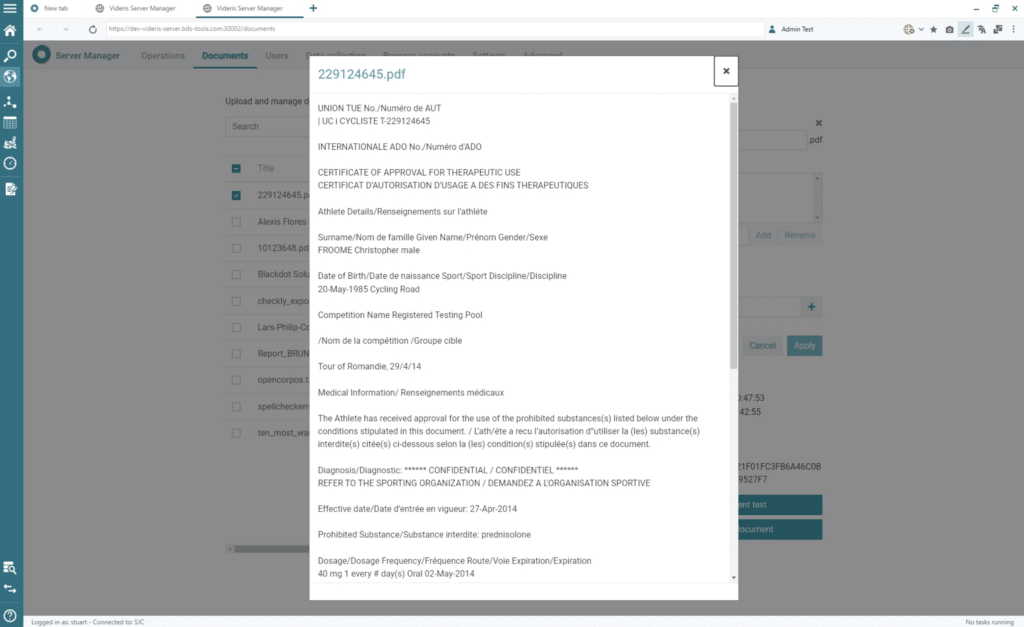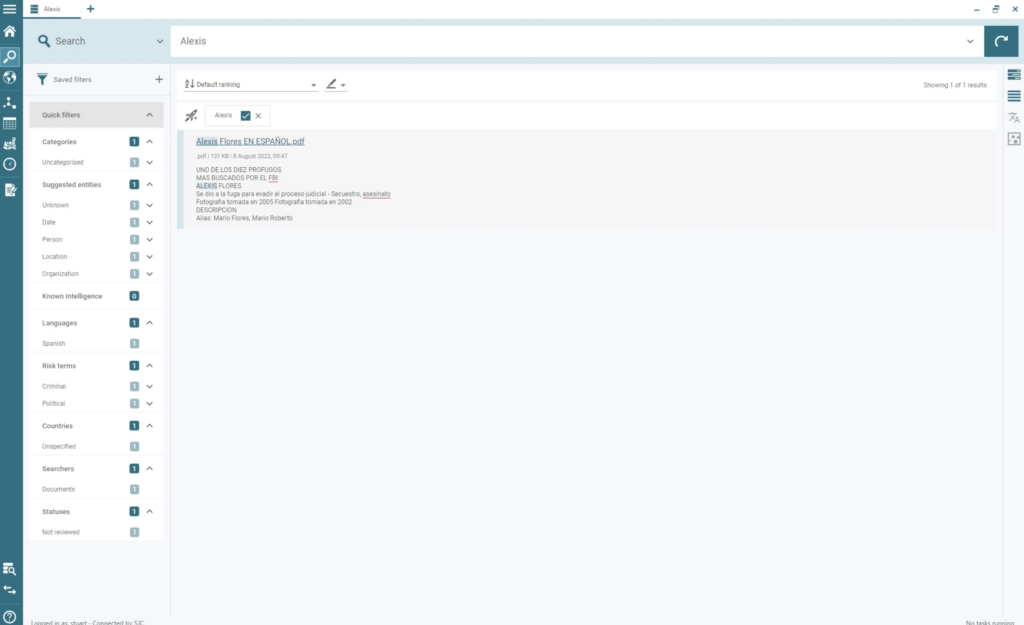What’s in a document?

By Stuart Clarke

Get the latest news and insights sent straight to your inbox
How Videris document search helps investigators to unlock value in their structured data
A true end-to-end platform
Ever since it was first created, Videris has focused on helping investigators understand the networks that exist in open-source data. Investigators can use Videris to map networks for many different purposes: from understanding a sanctioned entity’s associates using social media, to analysing a corporate structure for signs of involvement in money laundering, to identifying a group trading illicit goods on the dark web.
Videris unlocks value in unstructured data, which accounts for ~90% of the data that exists online today. However, we know that many investigators also need to consider documents as part of their investigations – whether this is a report, list of designated individuals or entities, or a handwritten note in a foreign language.
Historically, documents – have only been available within Videris through third party integrations, which has sometimes meant that Videris users needed to leave to platform to examine all of the data available to them. This is set to change with Videris 4.2.
Videris 4.0 introduced the Videris Connector Framework, an important milestone in our work to create a true end to end investigations platform across both external and internal data sources. Investigators can easily ingest Word documents, PDF files, Excel spreadsheets and even image files without requiring any third party solutions or integrations.
Where is document search useful?
Our new document search capabilities will allow investigators to apply Videris’s time-saving analytical capabilities to documents, alongside unstructured data. This feature will provide efficiency benefits and additional insight across a range of use cases, including:
- Organised crime/ counter terrorism: Intelligence analysts who are swamped with PDF intel reports, and image-based profile pages or wanted posters of suspects can ingest them into Videris, apply OCR (Optical Character Recognition) to them and extract text ready for search in minutes.
- Anti-money laundering: Financial crime specialists can ingest suspicious activity reports and easily link them to officer and company records to map out corporate networks, allowing them to quickly determine the level of risk and escalation path.
- Sanctions compliance/ supply chain verification: Investigators can consume research reports and internal watch lists relating to supply chains and cross reference business and officer names with up to date sanctions lists, leaks database and identify the presence of adverse media.
Benefits of document search
Ingest once, bring in to any relevant investigation
When documents have been ingested into Videris once, their content can be applied to future and even historic cases. Documents can also be shared with colleagues to facilitate collaboration and intelligence gathering.

Make complex documents more easily navigable
Our native ingestion capabilities have been implemented to tackle the trickiest and most insightful files in a forensically defensible manner, with the flexibility to make most documents searchable; from the hundreds of redacted pages of the Mueller report to large spreadsheets including hundreds of rows and columns.

Blend internal and external data
Alongside the Videris Connector Framework, investigators have unparalleled flexibility with Videris where they can easily blend internal and external data to make timely decisions and develop actionable intelligence.
To find out more about Videris Document Search, get in touch with your Account Manager or book a demo to see it in action.



